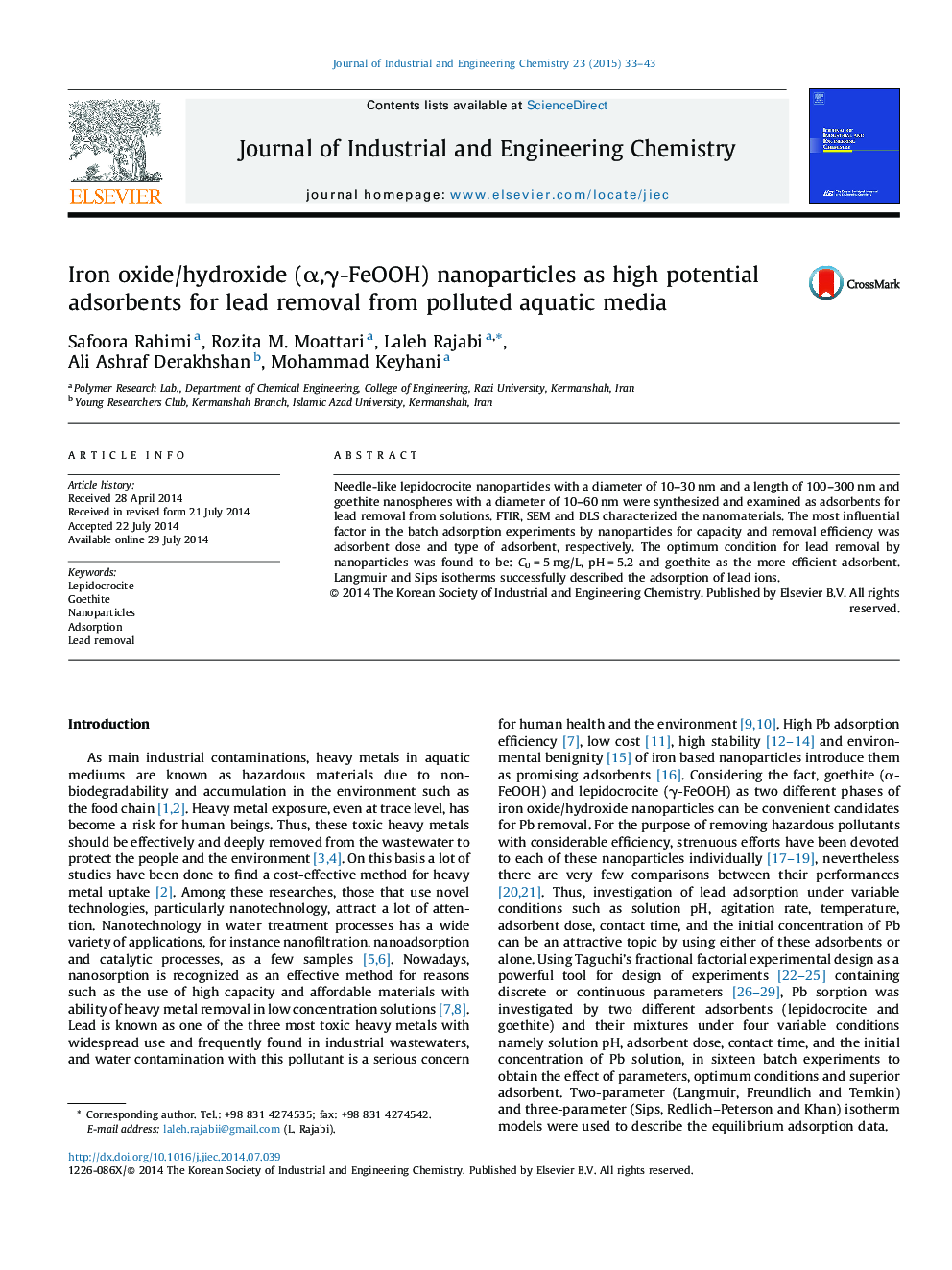| Article ID | Journal | Published Year | Pages | File Type |
|---|---|---|---|---|
| 226781 | Journal of Industrial and Engineering Chemistry | 2015 | 11 Pages |
•Goethite, lepidocrocite and their mixtures were compared as lead nanosorbents.•Adsorbent removal efficiency in 7/16 of Taguchi experiments was equal to 100%.•Among six isotherms studied, Sips successfully fitted equilibrium data.•Adsorption capacities of goethite and lepidocrocite nanosorbents were remarkable.•Goethite had higher sorption capacity at lower time than lepidocrocite.
Needle-like lepidocrocite nanoparticles with a diameter of 10–30 nm and a length of 100–300 nm and goethite nanospheres with a diameter of 10–60 nm were synthesized and examined as adsorbents for lead removal from solutions. FTIR, SEM and DLS characterized the nanomaterials. The most influential factor in the batch adsorption experiments by nanoparticles for capacity and removal efficiency was adsorbent dose and type of adsorbent, respectively. The optimum condition for lead removal by nanoparticles was found to be: C0 = 5 mg/L, pH = 5.2 and goethite as the more efficient adsorbent. Langmuir and Sips isotherms successfully described the adsorption of lead ions.
Graphical abstractFigure optionsDownload full-size imageDownload as PowerPoint slide
